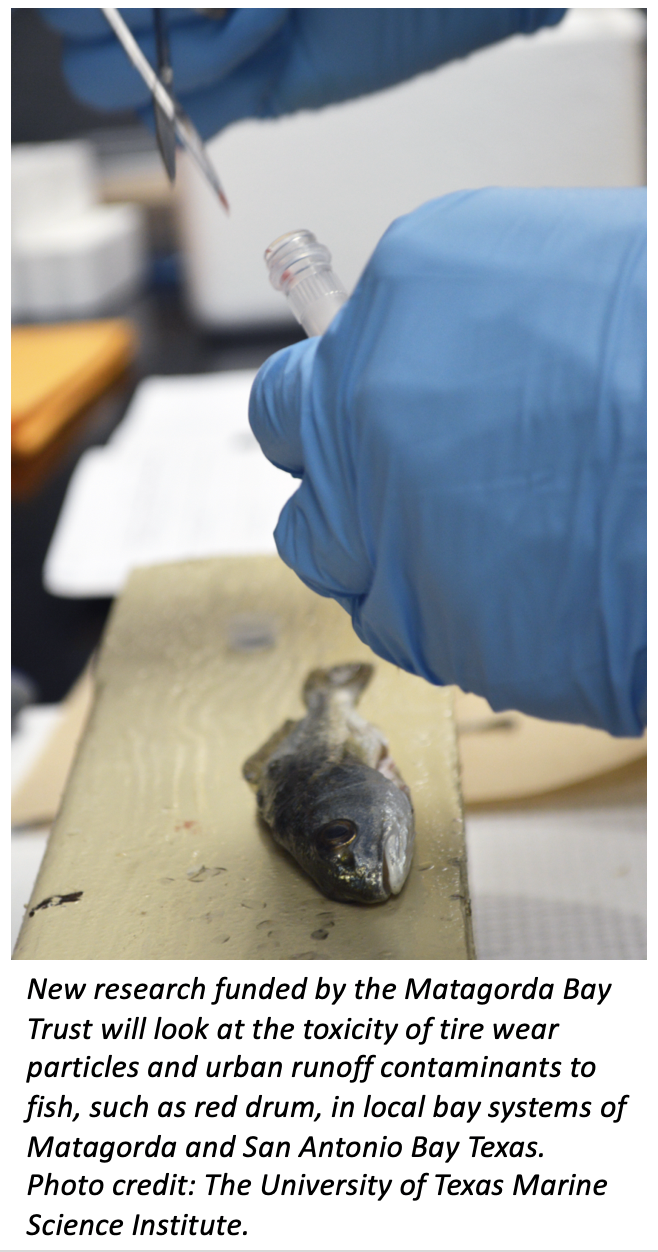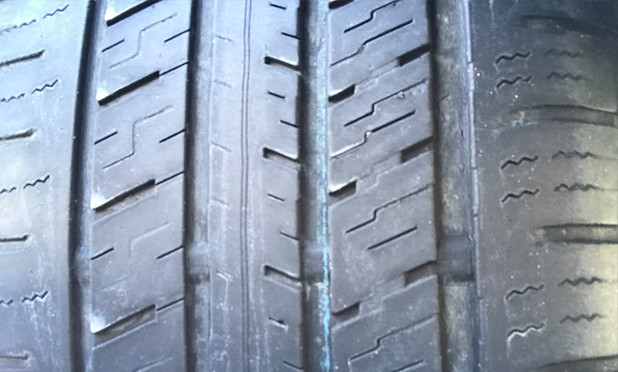 Contamination from roadways and runoff have long been cause for concern, but a recently identified breakdown product of tires - called 6PPD-quinone - has been raising alarms ever since its toxicity to salmon fisheries in the Pacific Northwest was discovered early last year. A new research project will look at the chemical impacts of tire wear particles to fish in South Texas bay systems.
Contamination from roadways and runoff have long been cause for concern, but a recently identified breakdown product of tires - called 6PPD-quinone - has been raising alarms ever since its toxicity to salmon fisheries in the Pacific Northwest was discovered early last year. A new research project will look at the chemical impacts of tire wear particles to fish in South Texas bay systems.
Steven Raabe, Trustee of the Matagorda Bay Mitigation Trust, announced today that twelve projects, from eight entities, totaling nearly 3.3 million dollars have been approved for funding. One of those projects will be completed by local researchers, Drs. Kristin Nielsen, Assistant Professor; Zhanfei Liu, Associate Professor; and Andrew Esbaugh, Associate Professor, all from the University of Texas Marine Science Institute (UTMSI) to assess the threat of tire leachate and urban runoff to Matagorda Bay and San Antonio Bay and its fish populations.
Populations of several ecologically and economically important sport fish species in the Matagorda and San Antonio Bays declined sharply over the last five decades. These trends also coincide with a marked increase in manufacturing operations and increased urbanization. This has important implications for fish populations in these ecosystems, as exposure to urban and municipal contamination can reduce survival, recruitment, growth, and reproductive output of freshwater and marine fish.
Millions of tons of tire wear particles are deposited on road systems annually, before being washed into nearby bodies of water. South Texas is prone to recurrent cycles of drought, followed by periods of flooding that wash large amounts of runoff into bodies of water. Urban runoff has long been linked to large-scale fish kills in freshwater, leading to the moniker of Urban Runoff Mortality Syndrome. Researchers at UTMSI are interested to determine how much of this chemical is present in local bay systems, and whether it is causing similar effects in local red drum and sheepshead minnow populations.
Very little is known about the toxicity of 6PPD-quinone, aside from its acute lethality to wild salmon in Pacific Northwest at relatively low environmental concentrations. This lack of information is causing considerable concern among scientists studying other large bodied fish populations. Due to its chemical structure, it is also possible that the toxicity of 6PPD-quinone may be higher in areas with intense UV exposure, like South Texas.
The researchers will begin sampling this summer and plan to complete their work in May of 2025. Their research will identify and characterize the ecological risk posed by a pervasive and long overlooked contaminant and provide information to help manage and mitigate the potential ecological risks of tire wear particles.
“The significance of these projects to the environmental health of the bay area cannot be overstated. These projects will serve this community – and our state – well,” Raabe, Trustee of the Matagorda Bay Mitigation Trust, stated in a press release. Matagorda Bay Mitigation Trust was funded as a result of the settlement of a Clean Water Act lawsuit, San Antonio Bay Estuarine Waterkeeper and S. Diane Wilson v. Formosa. The settlement called for, among other things, the establishment of the Matagorda Bay Mitigation Trust with funding provided by Formosa in the amount of $50 million over a five-year period. The mission of the Trust is to support and fund environmental mitigation projects, studies, and initiatives in the Matagorda Bay and San Antonio Bay ecosystems.









